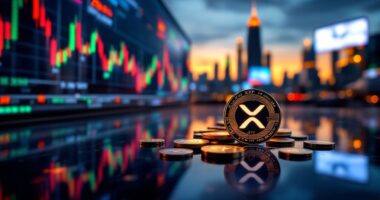Turbulence and triumph have characterized XRP’s journey through the financial landscape over the past year. With a staggering 257% price increase, XRP has demonstrated remarkable resilience despite ongoing legal battles with the SEC. This phoenix-like comeback has captured the attention of institutional investors and crypto enthusiasts alike, suggesting a potential paradigm shift in XRP’s market position.
The partial victory against the SEC in 2024 acted like rocket fuel for investor confidence. Though the appeal and $125 million fine still loom like storm clouds on the horizon, the crypto’s regulatory outlook appears increasingly bright. Ripple’s newly acquired Dubai license represents more than just another permit—it’s a legitimacy stamp that could open floodgates to global adoption.
Financial institutions are increasingly embracing XRP as their cross-border payment solution of choice. It’s like watching a shy wallflower suddenly become the belle of the ball, with giants like Mastercard and Bank of America joining the dance. The On-Demand Liquidity service is proving particularly attractive for international transactions, fundamentally turning XRP into the financial world’s express lane for moving money globally. Much like DeFi’s promise of 24/7 financial access, XRP offers continuous settlement capabilities that traditional banking simply cannot match.
XRP: once the wallflower, now the belle of the financial ball—transforming global transactions into express-lane money transfers.
Price predictions for 2025 range from a modest $1.82 to an ambitious $4.48, with some analysts eyeing the $10 mark by 2030. Of course, these projections should be taken with a grain of salt—crypto markets can turn on a dime faster than a politician’s promises. The $3 level represents the Mt. Everest that XRP must summit before reaching new heights.
What makes XRP particularly interesting is its technological foundation. The XRP Ledger processes transactions faster than a caffeinated cheetah, while RippleNet’s Interledger Protocol connects payment networks with remarkable efficiency.
Unlike some cryptocurrencies that resemble digital monopolies, XRP’s decentralized control structure—with top addresses holding less than 11% of supply—presents a invigoratingly democratic approach to digital finance. Investors seeking deeper insights into XRP’s market trajectory can access billion-dollar valuation data through premium Statista accounts, offering critical historical context for forecasting future growth.
While competition and regulatory hurdles remain, XRP’s expanding ecosystem and institutional backing suggest a market potential that might surprise even its most ardent skeptics.









